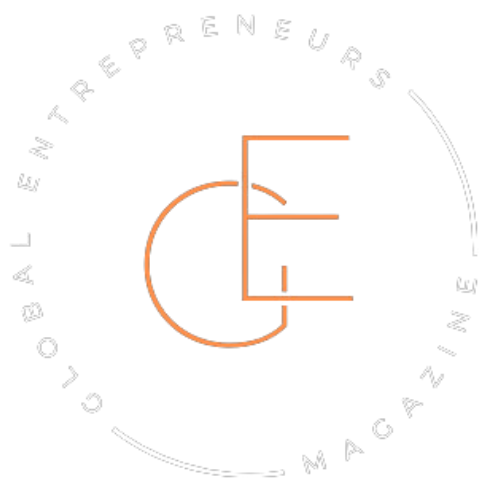You start with a blank page. No audience, no budget, no marketing team waiting in Slack. Just you—probably exhausted, probably second-guessing the idea you swore was going to change everything.
There’s a strange kind of pressure that hits when you realize no one’s coming to help. The launch day silence. The cold emails that get ghosted. The social posts that disappear into the void. And somehow, you’re still expected to “build traction.”
But here’s the thing most people won’t say out loud: you don’t need to do everything. You need to do a few things well—consistently, scrappily, honestly.
This isn’t about tactics pulled from ten-figure startups. It’s about what actually works when you’re building from nothing. No war chest. No fancy tech stack. Just a founder trying to get seen, heard, and maybe, finally, paid.
Starting where you are: turning constraints into clarity
No funding? No team? Good.
That might sound backwards, but when you have nothing to fall back on, you’re forced to make sharper decisions. Constraints have a way of killing off the fluff. You’re not trying to impress a boardroom—you’re just trying to find five people who care.
Take Daniel, a solo founder building a SaaS tool for freelance writers. He didn’t have the cash to run ads or the time to be on five social platforms. So he picked Twitter, stuck to sharing daily thoughts about freelancing, and replied to every comment like it was gold. Six months later, he had 3,000 followers and 800 paying users—without a logo or a brand deck.
What worked? Focus. He didn’t chase trends or force a funnel. He found one corner of the internet, showed up every day, and talked like a person.
Founders who try to do it all out of the gate end up tired and invisible. But those who start where they are—who pick a single message, a single platform, and actually stick with it—give themselves a chance to be remembered.
Talking like a human: the underrated power of founder voice
The instinct is to sound professional. Like a “real” company. But that instinct can kill your early momentum.
People don’t connect with companies—they connect with people. Especially when you’re new and unknown. Your best shot at cutting through the noise is to sound exactly like yourself.
Forget the polished copy and brand-safe language. Write emails like you’d send to a friend. Post updates like you’re texting someone who’s rooting for you. That raw, imperfect, founder-first tone builds trust faster than any polished campaign.
Some of the most effective early-stage marketing looks nothing like marketing. A short LinkedIn post about a mistake you made. A DM asking for honest feedback. A messy tweet thread about what you’re building and why. That’s the stuff that sticks.
People want to feel like they’re in the room with you—not watching a rehearsed pitch from behind glass.
Building in public without faking it
There’s a lot of noise around “building in public.” And while it sounds like a marketing hack, the truth is simpler: people like following stories that are still being written.
But there’s a line between transparency and performance. Sharing every minor update or pretending everything’s going great isn’t the point. What draws people in is honesty. Not vulnerability for likes—but context, process, and momentum.
You don’t have to tweet your revenue or post your sleep schedule. You can share what you’re testing, what broke last week, what small win actually made your day. That kind of openness gives people something to root for. It turns followers into early believers.
One founder documented every step of his product redesign in short Loom videos. Nothing fancy—just screen shares and thoughts. His audience grew steadily, and when launch day came, they didn’t just click—they cheered.
It wasn’t the “build in public” label that worked. It was the consistency, the clarity, and the fact that he never pretended to have it all figured out.
Borrowing attention the smart way

When no one’s listening to you yet, the fastest path to traction is finding a room where people already are—and earning the mic.
Forget ads for now. Forget trying to go viral. The real growth often comes from stepping into existing conversations and offering something useful.
Founders who grow from scratch usually do it through borrowed attention. They guest on podcasts. They drop insights in niche communities. They write one smart post in someone else’s LinkedIn comments—and suddenly, people click through.
There’s a founder who built her waitlist to 2,000 users just by being active in a Slack group for bootstrapped startups. She didn’t pitch. She offered feedback, shared screenshots, answered questions. Then one day, she posted, “Built something to solve this—want early access?” That thread alone brought 600 signups.
The trick isn’t shouting louder. It’s showing up where your audience already hangs out—and proving you’re worth listening to.
Proof over perfection: showing real traction
Most founders wait too long to share progress. They think they need a perfect product, a full website, a slick funnel. But what early supporters want is proof that something’s happening.
That might be a screenshot of your first sale. A raw testimonial. A messy Notion page tracking feature requests. Anything that says, “This is real—and it’s moving.”
Perfection is quiet. Proof makes noise.
There’s something magnetic about watching someone figure things out in public. When people see you shipping, testing, learning, and actually moving forward—even in small steps—they start to believe. And belief is marketing fuel.
One founder posted a weekly update on LinkedIn, even when some weeks were just, “Didn’t ship what I wanted, but here’s what I learned.” He didn’t always get a lot of likes. But over time, investors, collaborators, and users started reaching out—not because he was flashy, but because he was building.
People don’t need a masterpiece. They need momentum they can see.
Making it repeatable before trying to scale
A lot of founders jump the gun. One tactic works once, and suddenly it’s time to hire an agency, run ads, or build a full marketing funnel. But what matters most in the early days isn’t growth—it’s repeatability.
Did cold outreach land you a client? Great. Can you send 30 more that feel just as personal? Did one Twitter thread bring traffic to your site? Cool. Can you write five more that get the same kind of engagement?
The goal isn’t to go big. The goal is to go consistent.
There’s a founder who got 100 beta users through one DM strategy. Instead of scaling it with automation, he kept doing it manually—for months. Same message. Same structure. He tweaked the copy based on replies and got better every week. When it finally was time to automate, he wasn’t guessing—he was dialing up a playbook that already worked.
Premature scaling burns time and money. Repeatable wins build systems.
When it feels like no one’s watching
Every founder hits that stretch where it feels like shouting into the void. You’re putting in the hours. You’re posting, emailing, tweaking copy—but nothing’s landing. No replies. No traction. Just silence.
It’s the part no one glamorizes. The early grind, when you start questioning if any of it matters.
But here’s what’s easy to miss: the people who will care later? They’re watching now, quietly. They’re seeing you show up. They’re checking your updates without liking them. They’re seeing if you’ll keep going when it’s not working yet.
That tweet with 3 likes? Someone bookmarked it. That email no one replied to? Someone saved it. The DMs that never got answered? Someone read them—and might come back.
The work compounds, even when it looks invisible.
Founders who win at early-stage marketing aren’t the loudest. They’re the ones who keep showing up, long enough for the right people to notice.




